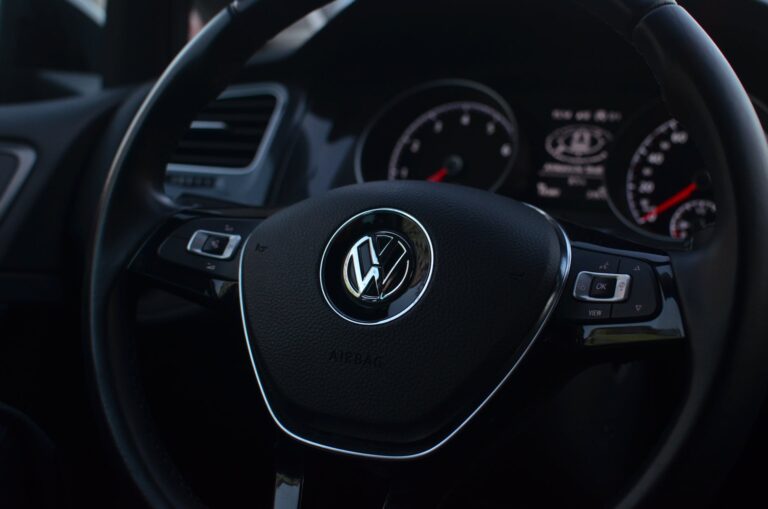The Road to Entrepreneurship: Starting a Car Dealership
Embarking on the journey of starting a car dealership requires careful planning, market research, and a passion for the automotive industry. This section will provide an introduction to the process of starting a car dealership, help you determine if it’s the right path for you, and guide you through the importance of researching the market.
Introduction to Starting a Car Dealership
Starting a car dealership is an exciting venture that allows you to combine your passion for cars with entrepreneurship. As a car dealer, you will have the opportunity to buy and sell vehicles, provide financing options, and offer a range of services to customers. However, it’s important to note that the car dealership business comes with its set of challenges and requires thorough planning and preparation.
Before diving into the world of car dealerships, it’s essential to evaluate your skills, experience, and financial capabilities. Consider your knowledge of the automotive industry, sales and marketing skills, and the ability to navigate the complexities of running a business. Assessing your strengths and weaknesses will help you determine if starting a car dealership aligns with your goals and aspirations.
Is Starting a Car Dealership Right for You?
Starting a car dealership requires an entrepreneurial mindset, strong business acumen, and dedication. It’s a highly competitive industry, and success depends on your ability to adapt to market trends, build relationships with customers, and effectively manage your operations.
To determine if starting a car dealership is the right fit for you, consider the following questions:
- Are you passionate about cars and the automotive industry?
- Do you have a solid understanding of the local market and customer preferences?
- Are you willing to invest the time and effort required to research, plan, and execute your business strategy?
- Can you handle the financial responsibilities associated with inventory, licensing, and operating costs?
- Are you prepared to deal with the challenges of competition and changing market dynamics?
By honestly assessing your capabilities and motivations, you can determine if starting a car dealership is the right path for you.
Researching the Market
Thorough market research is a crucial step in starting a car dealership. Understanding the local market, competition, and customer preferences will help you make informed decisions and develop effective strategies for success.
Start by researching the demand for different types of vehicles in your area. Analyze the preferences of potential customers, such as the popularity of sedans, SUVs, or electric vehicles. Consider factors like average income levels, demographics, and local automotive trends to identify target markets and tailor your inventory accordingly.
Additionally, gain insights into the competition in your area. Identify other car dealerships, both independent and franchise dealers, and analyze their strengths, weaknesses, and market positioning. This will help you identify gaps in the market and develop unique selling propositions to differentiate your dealership.
Conducting thorough market research will provide you with valuable information to develop a solid business plan, set realistic goals, and make informed decisions as you navigate the world of car dealerships.
As you embark on your entrepreneurial journey, remember that starting a car dealership requires careful planning, dedication, and a commitment to providing excellent customer service. By understanding the intricacies of the industry and conducting thorough market research, you can position your car dealership for success.
Navigating Legal Requirements
Starting a car dealership involves navigating various legal requirements to ensure your business operates within the bounds of the law. This section will cover three key aspects: understanding licensing and regulations, obtaining the necessary permits, and insurance considerations.
Understanding Licensing and Regulations
Before opening your car dealership, it’s crucial to understand the licensing and regulations specific to your jurisdiction. Each region may have different requirements, so thorough research is essential. This includes familiarizing yourself with the necessary car dealership license requirements and any additional permits or certifications you may need to operate legally. For more information on licensing requirements, you can refer to our article on car dealership license requirements.
Obtaining the Necessary Permits
To operate a car dealership, you’ll need to obtain the necessary permits and documentation. These may include a business license from your local government, a sales tax permit to collect and remit sales tax, and a dealer license specific to the automotive industry. It’s important to complete the required forms, pay any associated fees, and provide any supporting documentation to obtain these permits. Additionally, you may need to comply with zoning regulations and obtain any permits related to your physical location, such as signage permits or building permits.
Insurance Considerations
Insurance is a critical aspect of running a car dealership. It helps protect your business, employees, and customers from potential risks and liabilities. When starting a car dealership, consider obtaining various types of insurance coverage, such as general liability insurance, property insurance, and garage liability insurance. These policies can safeguard you against potential lawsuits, property damage, accidents, and theft. It’s advisable to consult with an insurance professional experienced in the automotive industry to determine the specific coverage your dealership requires. For more information on car dealership insurance, you can refer to our article on car dealership insurance.
By understanding and complying with the necessary licensing, permits, and insurance requirements, you can ensure that your car dealership operates legally and is adequately protected. It’s crucial to stay informed about any changes in regulations or requirements to maintain compliance. Additionally, seeking professional guidance, such as consulting with an attorney or an industry-specific consultant, can provide invaluable support when navigating the legal landscape of starting a car dealership.
Building Your Inventory
To successfully start a car dealership, it is crucial to establish a strong and diverse inventory of vehicles. This section will cover the key aspects of building your inventory, including sourcing vehicles, evaluating and inspecting vehicles, and creating a diverse inventory.
Sourcing Vehicles
When it comes to sourcing vehicles for your car dealership, there are several options available. You can consider purchasing vehicles from:
-
Auctions: Participating in auto auctions can provide access to a wide range of vehicles. These auctions may feature vehicles repossessed by banks, fleet vehicles, trade-ins, or off-lease vehicles.
-
Trade-Ins: Accepting trade-ins from customers is another way to acquire vehicles for your inventory. This not only helps customers in their vehicle upgrade process but also provides you with additional inventory.
-
Wholesale Dealers: Building relationships with wholesale dealers can be beneficial, as they specialize in selling vehicles to other dealerships. Wholesale dealers can offer competitive prices and a steady supply of vehicles.
-
Private Sellers: You can also explore purchasing vehicles directly from private sellers. This can be done through classified ads, online marketplaces, or referrals.
Remember to thoroughly research and verify the reputation and credibility of the sources you choose to ensure you acquire quality vehicles for your inventory.
Evaluating and Inspecting Vehicles
Before adding vehicles to your inventory, it is essential to evaluate and inspect them thoroughly. This helps ensure that you are offering reliable and high-quality vehicles to your customers. Consider the following steps:
-
Vehicle History Report: Obtain a comprehensive vehicle history report to check for any accidents, title issues, previous owners, and other important information about the vehicle’s history.
-
Mechanical Inspection: Have a qualified mechanic inspect each vehicle to identify any potential mechanical issues. This includes checking the engine, transmission, brakes, suspension, and other critical components.
-
Test Drive: Take the vehicle for a test drive to assess its performance, handling, and overall condition. This allows you to identify any potential issues that may not be apparent during the inspection.
-
Cosmetic Evaluation: Evaluate the vehicle’s exterior and interior condition, looking for any signs of damage, wear, or tear. Addressing cosmetic issues before offering the vehicle for sale can enhance its appeal to potential buyers.
Creating a Diverse Inventory
To cater to a wider range of customers, it is important to create a diverse inventory that encompasses various makes, models, and price points. Consider the following factors when selecting vehicles for your inventory:
-
Market Demand: Research the local market and identify the most popular vehicle types and models. This helps you cater to the preferences and demands of your target customers.
-
Profit Margins: Consider the potential profit margins for each vehicle. Analyze factors such as purchase price, repair costs, and estimated resale value to ensure a healthy return on investment. For more details on car dealership profit margins, refer to our article on car dealership profit margins.
-
Customer Preferences: Take into account the specific preferences of your target customers. For example, if you are targeting families, including SUVs and minivans in your inventory might be beneficial.
-
New and Used Vehicles: Offering both new and used vehicles can appeal to a wider range of customers. New vehicles may attract buyers looking for the latest models, while used vehicles can provide more affordable options. Ensure that you comply with any legal requirements and regulations related to selling new and used vehicles.
By sourcing vehicles from different channels, thoroughly evaluating them, and creating a diverse inventory, you can provide your customers with a wide selection of vehicles to choose from. This increases the chances of meeting their specific needs and preferences, ultimately contributing to the success of your car dealership.
Setting Up Your Dealership
Once you have navigated the legal requirements and built your inventory, it’s time to set up your car dealership. This involves careful consideration of the location and physical space, creating an appealing showroom, and establishing an online presence.
Location and Physical Space
Choosing the right location for your car dealership is paramount to its success. Look for a location that is easily accessible and has high visibility to attract potential customers. Consider factors such as proximity to major roads, local demographics, and competition in the area.
In terms of physical space, ensure that it is large enough to accommodate your inventory and provide an inviting atmosphere for customers. A spacious lot allows for convenient vehicle display and customer parking. Additionally, having a well-designed office space for sales and administrative activities is crucial for the smooth operation of your dealership.
Creating an Appealing Showroom
Your showroom is where customers will experience the first impression of your dealership. It should be aesthetically pleasing and well-organized to showcase your vehicles in the best light. Consider the following elements when designing your showroom:
-
Lighting: Ensure that the space is well-lit to highlight the features of the vehicles and create a welcoming ambiance. Natural lighting, if available, can be especially appealing.
-
Layout: Arrange the vehicles strategically, allowing customers to easily navigate through the showroom. Group vehicles by type or brand to facilitate comparison and make it easier for customers to find what they’re looking for.
-
Comfortable Waiting Area: Provide a comfortable seating area for customers to relax while waiting for assistance. Offering complimentary refreshments and reading materials can enhance their experience.
-
Visual Branding: Incorporate your dealership’s logo, colors, and signage throughout the showroom to establish brand consistency and create a professional look.
Establishing an Online Presence
In today’s digital age, having a strong online presence is essential for any business, including car dealerships. Establishing a website and utilizing social media platforms can significantly expand your reach and attract potential customers. Consider the following steps to establish an effective online presence:
-
Website: Develop a professional website that showcases your inventory, provides information about your dealership, and allows customers to contact you. Ensure that your website is mobile-friendly and optimized for search engines to improve your online visibility. For guidance on website design specific to car dealerships, refer to our article on car dealership website design.
-
Social Media: Create accounts on relevant social media platforms such as Facebook, Instagram, and Twitter. Regularly post engaging content, including photos and videos of your vehicles, promotions, and informative articles related to the automotive industry. Engage with your audience by responding to comments and messages. Utilize social media marketing strategies to generate leads and drive traffic to your website. To learn more about effective social media marketing for car dealerships, refer to our article on car dealership social media marketing.
Establishing an online presence not only increases your visibility but also allows you to interact with potential customers, generate leads, and build brand loyalty. By combining a strong physical presence with an effective online strategy, you can maximize the exposure of your car dealership and attract a wider customer base.
In the next section, we will explore various marketing and sales strategies to further grow your car dealership.
Marketing and Sales Strategies
To ensure the success of your car dealership, it’s essential to develop effective marketing and sales strategies. By implementing a well-thought-out plan, building relationships with suppliers, and utilizing effective sales techniques, you can attract customers and drive sales for your dealership.
Developing a Marketing Plan
A comprehensive marketing plan is crucial for promoting your car dealership and reaching your target audience. Start by identifying your target market and understanding their needs and preferences. This will help you tailor your marketing efforts to effectively communicate the value of your dealership and the vehicles you offer.
Here are some key elements to consider when developing your marketing plan:
-
Digital Presence: Establish a strong online presence by creating a professional website that showcases your inventory and highlights your dealership’s unique selling points. Optimize your website for search engines to increase your visibility online. Learn more about car dealership website design for best practices.
-
Social Media Marketing: Utilize social media platforms to engage with your target audience, share updates about your inventory, and promote special offers. Implement strategies such as targeted advertising, content creation, and community engagement to enhance your brand visibility. Check out our article on car dealership social media marketing for more tips.
-
Lead Generation: Implement effective lead generation strategies to capture potential customers’ information and nurture them throughout the buying process. Utilize tools like lead capture forms, landing pages, and email marketing campaigns to build a database of interested prospects. For more information, read our article on car dealership lead generation.
-
Traditional Advertising: Consider traditional advertising methods such as print ads, radio spots, and television commercials to reach a broader audience. Assess the demographics and media consumption habits of your target market to determine the most effective channels for your advertising efforts.
-
Online Reviews and Testimonials: Encourage satisfied customers to leave positive reviews and testimonials on platforms like Google My Business, Yelp, and social media. Positive reviews can enhance your dealership’s reputation and attract potential customers.
Remember, consistency and monitoring the effectiveness of your marketing efforts are essential. Regularly evaluate the success of your marketing strategies and make adjustments as needed to maximize your return on investment.
Building Relationships with Suppliers
Establishing strong relationships with suppliers is crucial for maintaining a diverse and high-quality inventory. Cultivate partnerships with reputable suppliers who offer a wide range of vehicles to meet the needs and preferences of your target market.
Here are some steps to consider when building relationships with suppliers:
-
Research and Identify Reliable Suppliers: Conduct thorough research to identify reliable suppliers that offer quality vehicles at competitive prices. Look for suppliers with a good reputation and a wide selection of vehicles to meet the demands of your customer base.
-
Attend Auto Auctions and Trade Shows: Participate in auto auctions and industry trade shows to connect with suppliers and explore new inventory opportunities. These events provide valuable networking opportunities and allow you to stay updated on the latest trends in the automotive industry.
-
Negotiate Favorable Terms: Negotiate favorable terms and conditions with your suppliers, including pricing, payment terms, and return policies. Building a mutually beneficial relationship can lead to better deals and a more sustainable partnership.
-
Maintain Open Communication: Regularly communicate with your suppliers to stay informed about their inventory availability, upcoming promotions, and any changes in pricing or terms. This open line of communication will help you make informed decisions and ensure a steady supply of vehicles.
Implementing Effective Sales Techniques
Implementing effective sales techniques is crucial for converting leads into customers and maximizing sales. As an entrepreneur in the car dealership industry, it’s important to empower your sales team with the skills and knowledge they need to succeed.
Consider the following sales techniques to enhance your dealership’s sales:
-
Product Knowledge: Ensure your sales team has in-depth knowledge about the vehicles in your inventory. This includes understanding the features, specifications, and benefits of each vehicle. This knowledge will instill confidence in your team and allow them to effectively communicate the value of the vehicles to potential customers.
-
Active Listening: Train your sales team to actively listen to customer needs and preferences. This will enable them to recommend vehicles that best match the customer’s requirements, enhancing their overall buying experience.
-
Building Trust: Emphasize the importance of building trust with customers. Encourage your sales team to be transparent, honest, and provide exceptional customer service throughout the buying process. Building trust will lead to long-term customer relationships and positive word-of-mouth referrals.
-
Upselling and Cross-Selling: Train your sales team to identify opportunities for upselling and cross-selling. By understanding customer preferences and needs, they can recommend additional features, accessories, or service packages that align with the customer’s interests.
By developing a comprehensive marketing plan, building strong relationships with suppliers, and implementing effective sales techniques, you can drive customer engagement and boost sales for your car dealership. Remember, continuous learning, adaptability, and customer-centricity are key to staying competitive in the ever-evolving automotive industry.
Managing Your Car Dealership
Once your car dealership is up and running, effective management becomes crucial for long-term success. This section will explore three key aspects of managing a car dealership: hiring and training staff, streamlining operations with software, and providing excellent customer service.
Hiring and Training Staff
To ensure smooth operations and exceptional customer experiences, hiring and training the right staff is essential. Look for individuals with a passion for cars, strong interpersonal skills, and a customer-centric mindset. From salespeople to finance managers, each team member plays a vital role in your dealership’s success.
When hiring, consider conducting thorough interviews, checking references, and even implementing practical assessments to assess candidates’ skills and knowledge. Once you have your team in place, invest in comprehensive training programs to equip them with product knowledge, sales techniques, and customer service skills. Regular training sessions and ongoing professional development opportunities will keep your staff up-to-date with industry trends and ensure they deliver top-notch service.
Streamlining Operations with Software
Efficient management of your dealership’s operations is crucial for maximizing productivity and profitability. Implementing car dealership CRM software can streamline various aspects of your business, including inventory management, sales tracking, customer relationship management, and more. This software automates manual tasks, centralizes data, and provides valuable insights to help you make informed decisions.
A robust CRM system can help you track and manage customer interactions, streamline lead generation, and facilitate follow-ups. It can also integrate with other software solutions, such as accounting and marketing tools, to create a seamless workflow. By utilizing the right software, you can optimize your dealership’s efficiency and focus on building relationships with customers.
Providing Excellent Customer Service
In the highly competitive automotive industry, providing exceptional customer service is key to building a loyal customer base and gaining a competitive edge. Train your staff to prioritize customer satisfaction, from the initial greeting to post-sales support. Encourage them to actively listen to customers’ needs, provide transparent information, and offer personalized recommendations.
To enhance the customer experience, consider implementing a customer relationship management system that tracks and analyzes customer interactions. This will help you identify opportunities for improvement and ensure that every customer receives the attention they deserve. Promptly address customer concerns and feedback, aiming to exceed their expectations at every touchpoint. By consistently providing excellent customer service, you can foster long-term relationships and generate positive word-of-mouth, which is invaluable in the automotive industry.
By focusing on hiring and training the right staff, streamlining operations with software, and providing exceptional customer service, you can effectively manage your car dealership. Remember to continuously adapt and improve your management strategies to stay ahead in the competitive market. For more insights on various aspects of running a successful car dealership, explore our other articles on MotorLot.







